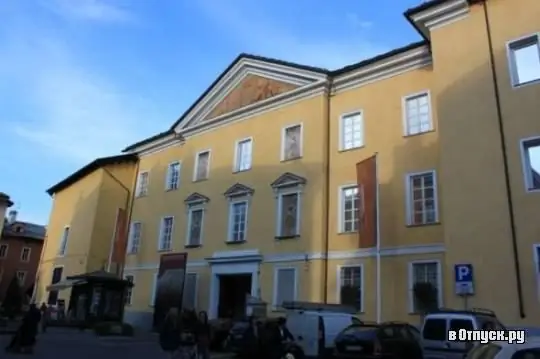
Description of the attraction
The Regional Archaeological Museum, located in the city of Aosta, is dedicated to the history of the autonomous Italian region of Val d'Aosta. Perhaps its most famous exhibits are the Balteo Bronzeo - a bronze belt, a model of Augusta Pretoria, the predecessor of Aosta, and the Pautasso numismatic collection.
The building that houses the museum today was built in 1633. Then, under the Shallan family, it housed the barracks, later - the Vizitadine monastery, and in the 18th century the building acquired its present appearance. The paintings of the outer walls, which depict portraits of members of the Challan family and the cross of the Savoy dynasty, were made in the 19th century. Recently, restoration work was carried out here.
Part of the museum's expositions is located underground, where, as a result of archaeological excavations, fragments of the ancient Roman colony of Augusta Pretoria were unearthed, including the southeastern part of the eastern tower of the Porta Principalis Sinistra gate, one of the four gates through which the city was entered, and section of the earthen embankment still supporting the city walls of Aosta.
All exhibits of the museum are arranged in chronological order. The first thing that visitors see are ancient Assyrian tablets collected by Canon Boson while searching on the banks of the Tigris and Euphrates rivers. Anthropomorphic figurines from the archaeological site of Saint-Martin-de-Corleans and an interesting reconstruction of Augusta Pretoria with explanatory cards are also exhibited there. And in the reconstruction of an ancient burial one can see objects of a ritual funeral rite found in one of the graves of the necropolis of San Rocco. Other rooms are dedicated to gravestone inscriptions and local religious cults - it is here that the Balteo Bronzeo and the wonderful statue of Jupiter are exhibited. Christianity is represented by a precious 6th-century pulpit found during excavations in Aosta Cathedral. On the upper floors of the museum there are exhibition halls, in which, among other things, you can get acquainted with the Pautasso numismatic collection - it contains coins from the period of Ancient Greece to the period of the Savoy dynasty. Celtic, Gaulish and Padua coins are also exhibited here.






